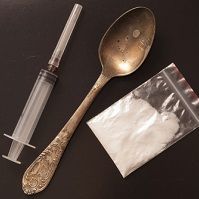Study Shows Opioid Agonist Therapy May Prevent Spread of Hepatitis C Among Young Injection Drug Users
Researchers have found that maintenance treatment with methadone or buprenorphine may help prevent hepatitis C infection among injection drug users, a population with the highest risk of infection of the virus.

Researchers have found that maintenance treatment with methadone or buprenorphine may help prevent hepatitis C infection among injection drug users, a population with the highest risk of infection of the virus.
Opioid agonists such as buprenorphine are medications prescribed to treat opioid addiction. At low doses buprenorphine produces sufficient agonist effect to allow opioid-addicted individuals to stop misuse of opioids without experiencing withdrawal symptoms, according to the National Alliance of Advocates for Buprenorphine Treatment.
The therapy may be an effective strategy to reduce injection-drug use of heroin and other opioids that can fuel the spread of hepatitis C virus (HCV) among young people, according to a study published in the October issue of JAMA Internal Medicine. Injection drug use that involves sharing of tainted needles and other equipment is the most common way the virus is transmitted today and thus a main reason to target young users, according to Judith Tsui, MD, of Boston University School of Medicine and the lead author of the study.
“Young injection drug users are a major driving force in the epidemic of HCV infection in the United States and Canada and therefore are an important target for prevention. …” the study authors wrote in a JAMA news release. “Our results suggest that treatment for opioid use disorders with maintenance opioid agonist therapy can reduce transmission of HCV in young adult injection drug users and should be offered as an important component of comprehensive strategies for prevention of primary HCV infection”.
Hepatitis C is a bloodborne virus that if left untreated can cause serious damage to the liver. Before it was discovered in 1989, blood supplies in hospitals and other health care settings were not screened for hepatitis C, meaning someone could have been exposed to the virus and infected without knowing it.
The CDC has recommended testing for the virus for all baby-boomers - people born between 1945 and 1965. However, new outbreaks of the virus have spiked among younger people below the age of 30, especially among young adults who inject drugs, according to surveillance data from 2006 to 2012 collected by the Centers for Disease Control and Prevention.
In this latest observational cohort study conducted from January 2000 through August 2013, Tsui and a team of researchers looked at 552 injection drug users in San Francisco. They recruited young adults who were negative for hepatitis C antibody and RNA and conducted quarterly interviews with them and obtained blood samples.
Study participants were young, mostly white homeless men (31.9% were women) with an average age of 23. Median duration of drug use was 3.6 years and one third used drugs daily.
Researchers documented 171 cases of hepatitis C infection during the period of observation for an incidence rate of 25.1 per 100, according to the JAMA statement. Study data indicates that there was a significantly lower incidence of hepatitis C virus infection for participants who took part in maintenance opioid agonist therapy but not for those who reported non-opioid agonist forms of treatment or opioid agonist detoxification, according to the study abstract.
Researchers concluded that maintenance treatment with methadone or buprenorphine for opioid use disorders may be an important strategy to prevent the spread of HCV infection among young injection drug users.

